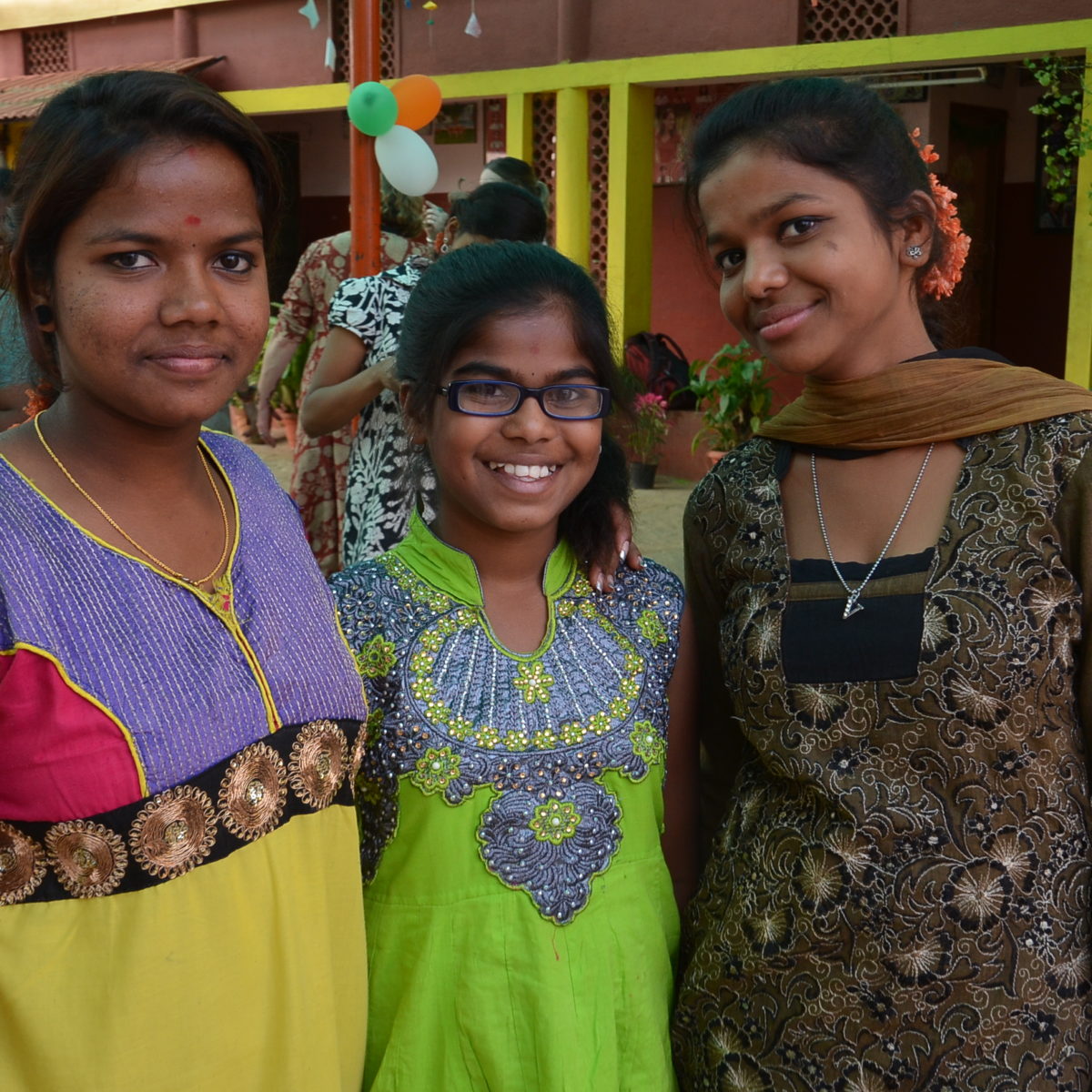
Blog
"For us, that means educating and empowering the next generation of community leaders to address these issues."
Donor Trip
By Kim Burnett, Shadhika President and CEO
February 8, 2018
Reading Time: 4 minutesThe cave is cool, a welcome respite from the heat and humidity. I listen as our guide describes the ancient stories carved into the huge granite stones before us. We are at the Elephanta Caves, a UNESCO site in Mumbai.
I am joined by a group of Shadhika college scholarship students from VACHA, our partner in Mumbai, and five Shadhika donors. Our tour is part of Shadhika’s 5th Annual Donor Trip to India. This year, our two-week trip took us to visit Shadhika’s projects in Delhi, Mumbai, Bangalore, and Kolkata.
As the guide continues to explain these 5th century treasures, I find myself distracted by a conversation I had earlier in the day with a colleague about how change is made.
There is a current buzzword going around in Indian philanthropy: scalability. As in, “that’s a great idea, but how are you going to scale that?” It has led some nonprofit practitioners to begin to package and distribute their curricula as a social franchise, in pursuit of bringing their ideas to the most people in the shortest time possible.
Though such a scalability approach may help create an idea “virus,” there is a risk these ideas may simply become fads. For lasting change to occur, these ideas need to be internalized, and that takes time.
At Shadhika we believe that to make a sustainable impact on the issues of gender inequality in India we need to invest in generational change. For us, that means educating and empowering the next generation of community leaders to address these issues so that they can become the living incarnation of this “idea virus.”
This is the strategy we’ve been pursuing since I joined Shadhika five years ago. And though there have been glimmers of the impact of this approach on my previous visits, on this last visit I began to see it everywhere.
I saw it at STOP India, our project in Delhi, where four years ago Shadhika provided seed funding to start a garment-manufacturing business so that the survivors of trafficking could learn a trade and become self-sufficient. This year, I watched with awe as those same women are now becoming trainers themselves and working preemptively to train new women who are at the highest risk for trafficking.

I saw it in our visits with Shadhika’s college scholarship recipients, many of whom will be graduating from college in 2018. Three years ago, these students had to convince their parents and neighbors to allow them to go to college instead of marrying them off. On this visit they reported that not only have their achievements inspired other parents to send their daughters to college, but now they have elders (previously opposed to them going to college) coming to them and asking for their help with banking and filing official forms.
And finally, I saw it during our home visits with students’ families. At Uddami, the student’s parents were moved to tears as they spoke of the impact their daughter’s success. “I never went to school,” her father shared, “but I am the old India. I want my daughter to be the new India.”
I recall these stories and many others as I focus on the massive stone statues before me. Here for thousands of years, they seem eternal. Yet when one looks closer, they can see how the weather and time have eroded their façade.
And that is our long-term path to change. Like water on granite, with every young woman we empower to lead, every young man who becomes an advocate for equality, and every parent who invests in his or her daughter, we are wearing down the cultural practices that discriminate against women and girls in India.
It takes a steady rain to wash away stone. But rain is inevitable and eventually even the hardest granite is reduced to dust. Five years in, we have begun to see the grooves of change.
Read more
